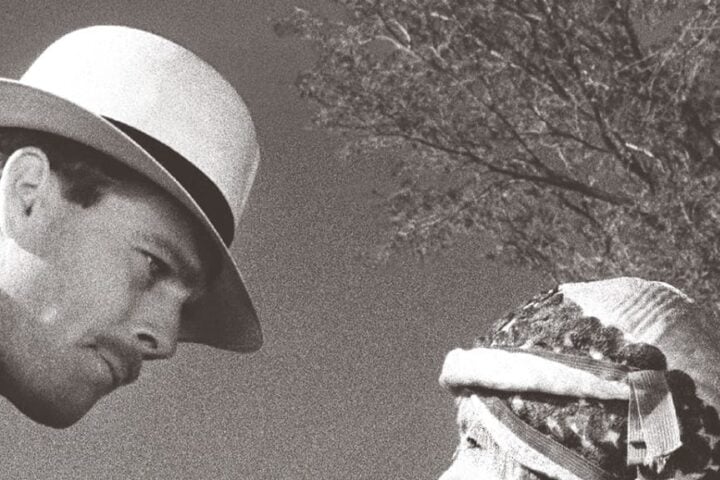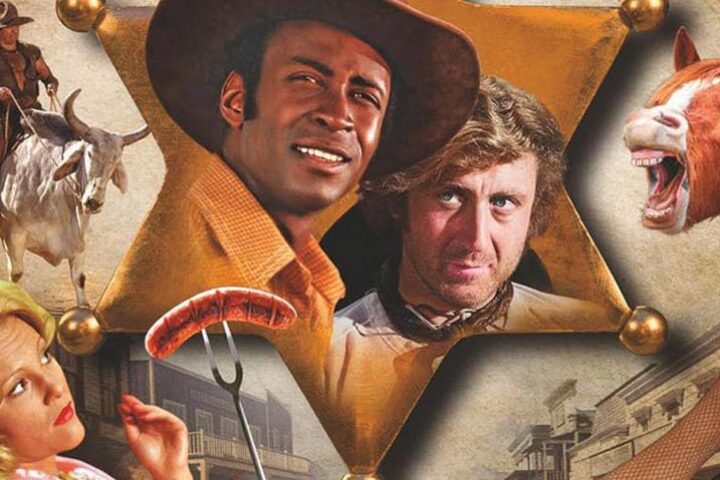With Chinatown, Roman Polanski and screenwriter Robert Towne fashioned a multifaceted morality play that spoke both to a specific (and enduring) history of violence and corruption in the City of Angels and to the disenchanted orphans of the Summer of Love. If the final line of the film (“Forget it, Jake, it’s Chinatown”) has come to be recognized as one of the greatest in cinematic history, it’s because few others so succinctly addressed the tenor of their times—in this case, the downbeat, miasma-like mood exuded by 1970s New Hollywood cinema, a world-weary shrug of resignation.
Despite the film’s forgivably literal ending, Chinatown here is less destination than state of mind. It’s a place where the customs are alien, motivations always suspect, and the only thing you can depend on is that no good deed will go unpunished. A case in point is a key exchange between socialite Evelyn Mulwray (Faye Dunaway) and private eye J.J. “Jake” Gittes (Jack Nicholson): When she asks him what he used to do as an LAPD officer on his beat in Chinatown, he wryly responds, “As little as possible.”
Conversely, Towne’s cannily crafted script could never be accused of inactivity, exhibiting all the narrative complexity of classic noirs like The Big Sleep, where repeated viewings only reveal additional layers of double meanings and duplicitous intentions. At the same time, Towne pulls the revisionist rug out from under viewers by revealing that Evelyn, supposedly the film’s black widow and femme fatale, is in fact its neurotic heroine. This topsy-turvy alteration transforms her into a tragic victim whose only aim is to prevent the further perversion of innocence.
And that’s not the only way in which the script owes as much to Sophocles as to Raymond Chandler: Gittes makes a fine Oedipus, doggedly pursuing his investigation to the point where he’s accomplished precisely what he most wants to avoid. And through it all, Polanski ensures that we’re restricted to Gittes’s fallible subjectivity by forcing us to observe over his shoulder as the convoluted narrative thread unravels. Robert Altman attempted something similar with his adaptation of Chandler’s The Long Goodbye, but where he pointed up the unfeasibility of Philip Marlowe’s moral code by setting him adrift in the permissive haze of ’70s L.A., Polanski and Towne transport the malaise back to its roots in their vividly imagined period piece.
Chinatown’s imagery is so sumptuous, its wealth of period details so minutely and impeccably observed, that the film lures viewers into its morally murky world without drawing unseemly attention to its mechanics. Richard Sylbert’s set design and Anthea Sylbert’s costume design are never less than pitch perfect. John A. Alonzo’s marvelous cinematography plays theme and variation on the counterpoint between dull desert tones and startlingly verdant hues, and indulges in some astonishing magic-hour photography, which may have actually been lensed by veteran DP Stanley Cortez before he was abruptly sacked by Polanski.
Polanski has always adopted a protean visual style, employing the least obtrusive, yet ideally suited, means to achieve a desired effect, favoring precision framing that plumbs psychological and spatial relations with equal acuity. The filmmaker also prefers sinuous camera movements during extended takes that lend certain scenes the feel of unbroken dramatic unity. And he often uses subdued handheld camera movements that are worlds apart from the queasy-making whiplash style that nowadays is supposed to signify cinema verité authenticity.
Chinatown ends on a note so despairing that it seems practically apocalyptic. Innocence becomes evil’s hapless prey, and the ostensible hero can only look on in shock and horror, overwhelmed with his impotence. This is the ending Polanski insisted on, and, given his own history, it’s easy to see why. Where Macbeth at least allows him to lop off the head of the scheming malefactor, Chinatown is an admission of his own helplessness before the sheer blind luck of history. The famous crane shot that ends the film shows Gittes swallowed up by the heart of unrelenting darkness, lead off in defeat toward the screen’s absolute vanishing point.
Extras
Wading through more than five hours of extras, carried over from the two-disc Centennial Edition DVD, allows viewers ample opportunity to dangle their toes into practically every aspect of Chinatown’s historical backdrop, its conception, production, and legacy. First up, the commentary track features screenwriter Robert Towne and David Fincher, a longtime fan of the film. The talk tends toward some dead air early on, but the track gets more compelling, not to mention more detail-oriented, as it goes along. Fincher does the majority of the opining, starting with a few softball “Was that in the text?” questions tossed Towne’s way, before he sort of takes over, offering his own voluble take on the film’s visual style, character motivations, and performances. “Humble” wouldn’t exactly be the word to describe Fincher’s second-guessing (read: nitpicking) when it comes to certain technical decisions; then again, he’s usually pretty spot on. Altogether it’s a fascinating and unquestionably informative discussion.
Coming next is the three-part, feature-length documentary “Water and Power,” an exhaustive investigation into the ongoing effects of the Water Wars depicted in Chinatown. Part one fleshes out the film’s historical background, correcting some of its more blatant fictions and distortions. Among the roster of talking heads and participants, Towne is on hand to tour the Department of Water and Power’s main aqueduct, and William Mulholland’s daughter reminisces about her father and his legacy. Part two explores the social and environmental devastation inflicted on Owens Valley, where the bulk of Los Angeles’s water supply originates. Part three examines the Los Angeles River, its history and current conditions, effectively skewing near the end into an advocacy piece on conservancy and resource management.
Finally, there’s a feature-length making-of documentary broken up into four segments: “An Appreciation” features directors Kimberly Pierce and Steven Soderbergh, cinematographer Roger Deakins, and composer James Howard Newton discussing various aspects of the film; “The Beginning and the End” finds Towne talking about the origins of his script and how he based a lot of Gittes’s character traits on Nicholson; “Filming” delves deeper into the location shooting, filmmaking techniques, and Polanski’s cameo; and “Legacy” goes into Goldsmith’s score, the speed of its composition, as well as the film’s short- and long-term reception.
Overall
Forgetting Chinatown will be exceedingly difficult with this stunning new Blu-ray transfer from Paramount, brimming over with a tidal pool of extras, even if they aren’t necessarily new to this edition.
Since 2001, we've brought you uncompromising, candid takes on the world of film, music, television, video games, theater, and more. Independently owned and operated publications like Slant have been hit hard in recent years, but we’re committed to keeping our content free and accessible—meaning no paywalls or fees.
If you like what we do, please consider subscribing to our Patreon or making a donation.



